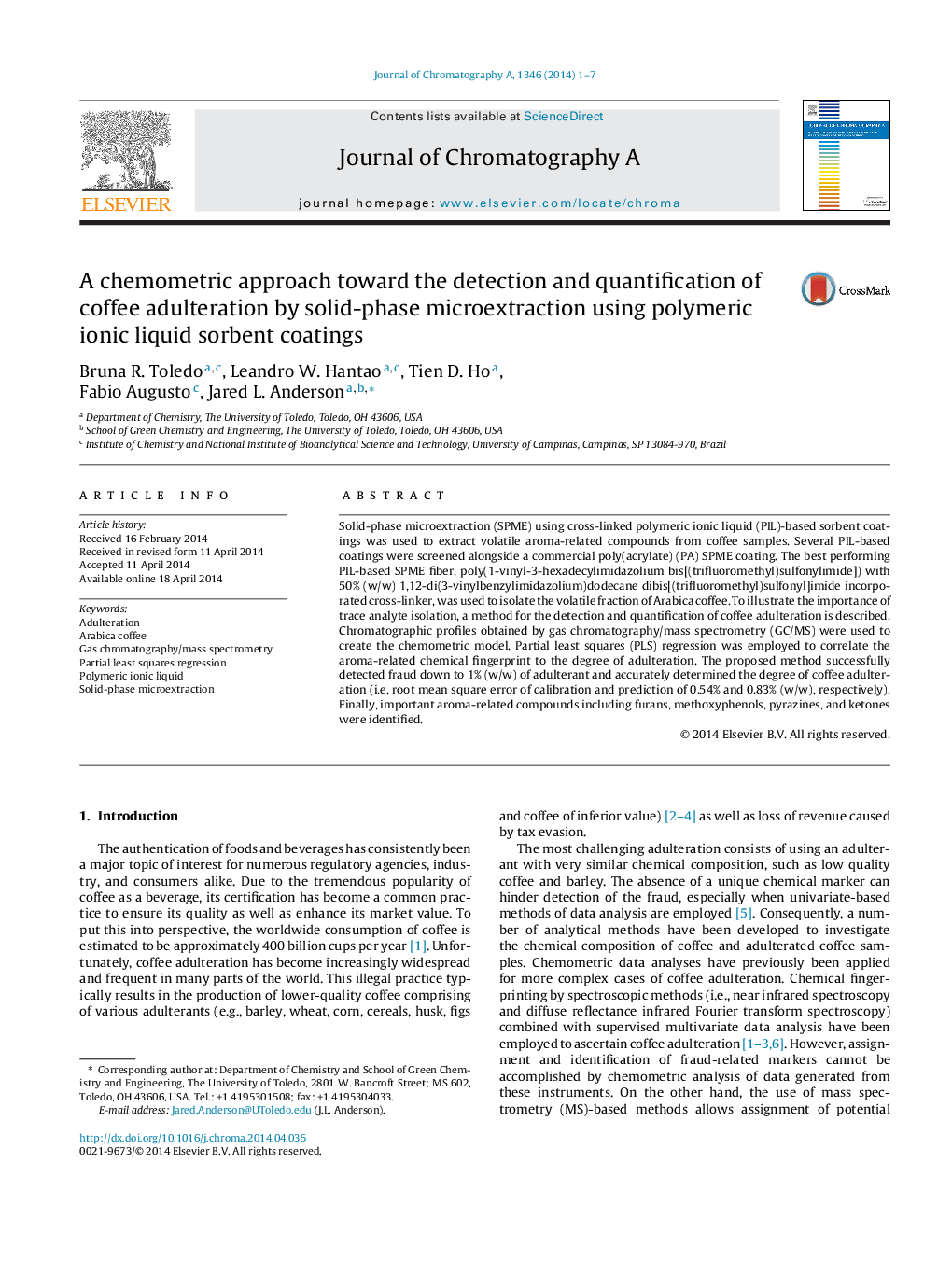| کد مقاله | کد نشریه | سال انتشار | مقاله انگلیسی | نسخه تمام متن |
|---|---|---|---|---|
| 1199893 | 1493580 | 2014 | 7 صفحه PDF | دانلود رایگان |
• Chemical profiling of Coffea arabica by polymeric ionic liquid SPME is described.
• Partial least squares regression correlated the aroma fingerprint to adulteration.
• Compounds that contributed to the PLS model were identified and assigned.
• Trace aroma volatiles exhibited a decisive role in the detection of coffee fraud.
Solid-phase microextraction (SPME) using cross-linked polymeric ionic liquid (PIL)-based sorbent coatings was used to extract volatile aroma-related compounds from coffee samples. Several PIL-based coatings were screened alongside a commercial poly(acrylate) (PA) SPME coating. The best performing PIL-based SPME fiber, poly(1-vinyl-3-hexadecylimidazolium bis[(trifluoromethyl)sulfonylimide]) with 50% (w/w) 1,12-di(3-vinylbenzylimidazolium)dodecane dibis[(trifluoromethyl)sulfonyl]imide incorporated cross-linker, was used to isolate the volatile fraction of Arabica coffee. To illustrate the importance of trace analyte isolation, a method for the detection and quantification of coffee adulteration is described. Chromatographic profiles obtained by gas chromatography/mass spectrometry (GC/MS) were used to create the chemometric model. Partial least squares (PLS) regression was employed to correlate the aroma-related chemical fingerprint to the degree of adulteration. The proposed method successfully detected fraud down to 1% (w/w) of adulterant and accurately determined the degree of coffee adulteration (i.e, root mean square error of calibration and prediction of 0.54% and 0.83% (w/w), respectively). Finally, important aroma-related compounds including furans, methoxyphenols, pyrazines, and ketones were identified.
Journal: Journal of Chromatography A - Volume 1346, 13 June 2014, Pages 1–7
